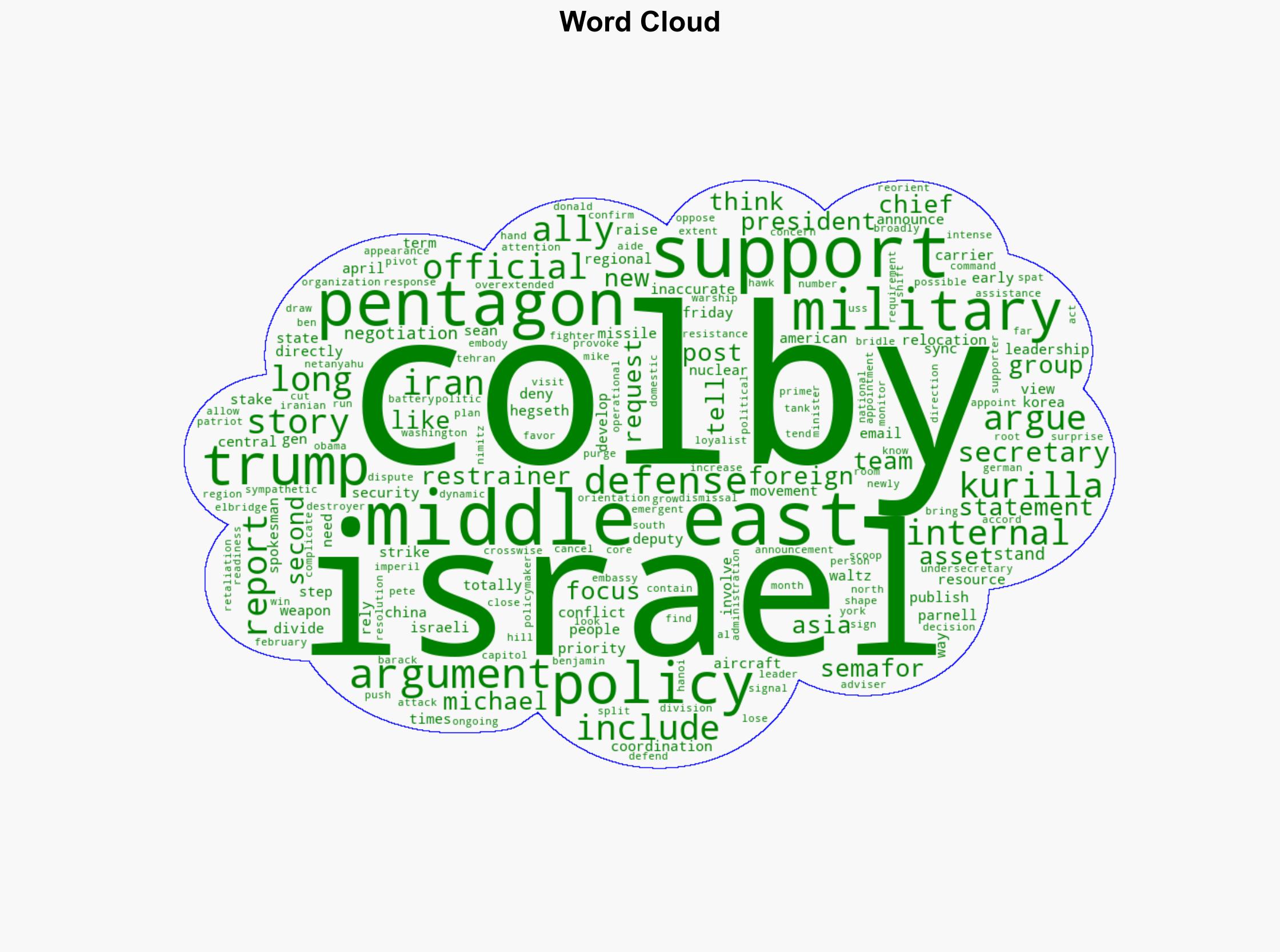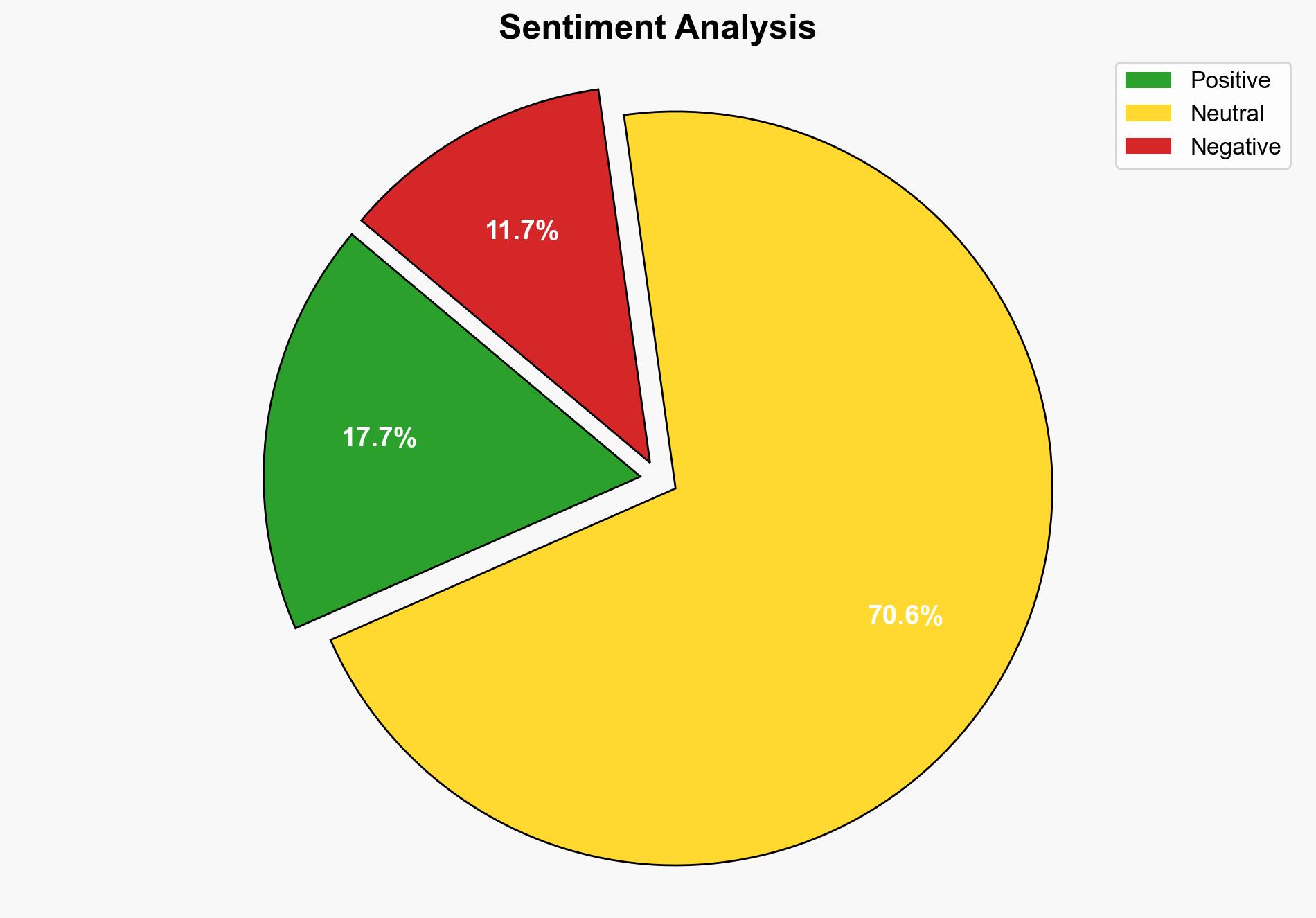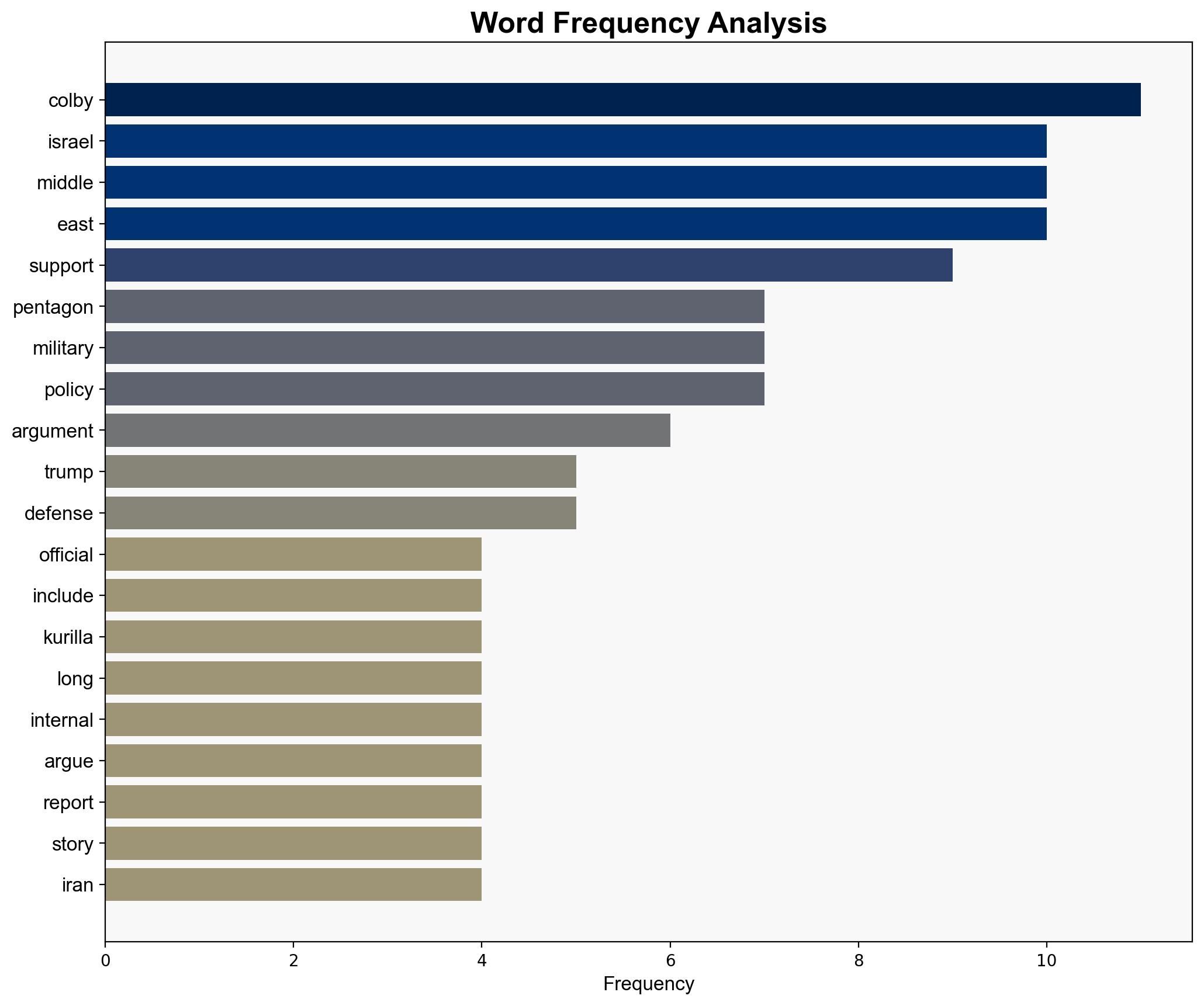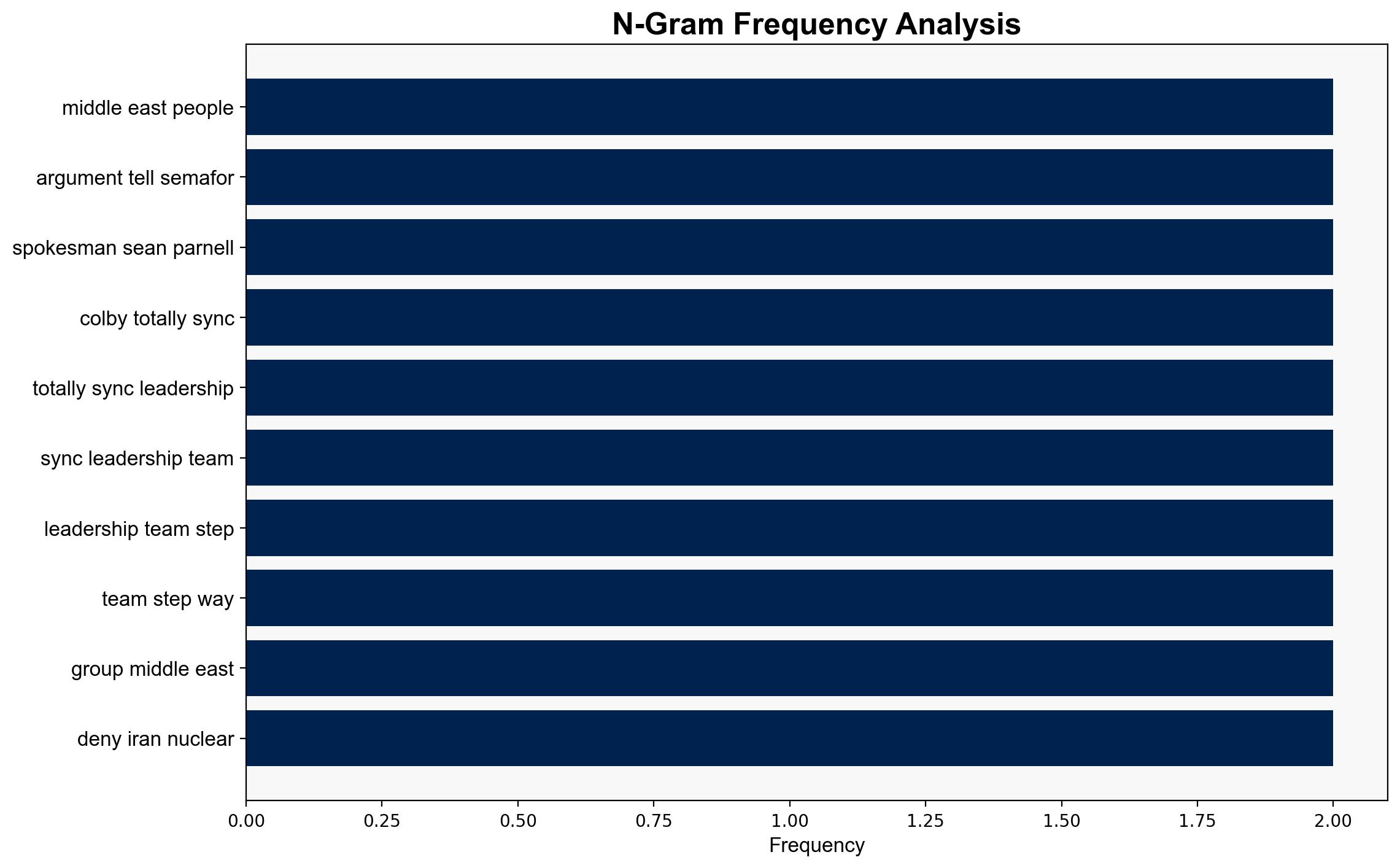PENTAGON SPLIT OVER POLICY – Semafor.com
Published on: 2025-06-15
Intelligence Report: PENTAGON SPLIT OVER POLICY – Semafor.com
1. BLUF (Bottom Line Up Front)
The Pentagon is experiencing internal divisions regarding the extent of military support to Israel, particularly in the context of shifting global priorities towards Asia. This discord involves key figures advocating for resource allocation to the Middle East versus those emphasizing the strategic pivot towards Asia, primarily to counter China’s influence. The situation is exacerbated by recent geopolitical tensions involving Iran, necessitating a reevaluation of military asset deployment. Recommendations include balancing regional commitments with global strategic priorities to maintain readiness and influence.
2. Detailed Analysis
The following structured analytic techniques have been applied to ensure methodological consistency:
Causal Layered Analysis (CLA)
At the surface, the Pentagon’s internal debate reflects immediate military support needs for Israel. Systemically, this is tied to broader U.S. foreign policy shifts towards Asia. The worldview involves balancing traditional alliances with emerging strategic imperatives. Myths center around the U.S.’s role as a global stabilizer and its ability to manage multiple regional commitments.
Cross-Impact Simulation
The reallocation of military assets from Asia to the Middle East could weaken deterrence against China and North Korea, potentially emboldening these states. Conversely, insufficient support for Israel might destabilize the Middle East, increasing threats from Iran and its proxies.
Scenario Generation
– Best Case: A balanced approach is achieved, maintaining strong deterrence in Asia while adequately supporting Israel.
– Worst Case: Resource misallocation leads to heightened conflict in either region, straining U.S. military capabilities.
– Most Likely: Incremental adjustments in asset deployment, with ongoing debates influencing long-term strategy.
3. Implications and Strategic Risks
The internal Pentagon split poses risks to U.S. strategic coherence and military readiness. Emerging threats include potential Iranian retaliation and increased Chinese assertiveness. Systemic vulnerabilities lie in overextended military commitments and the potential for misaligned strategic priorities.
4. Recommendations and Outlook
- Conduct a comprehensive review of global military commitments to optimize resource allocation.
- Enhance diplomatic efforts to mitigate regional tensions, particularly with Iran.
- Develop contingency plans for rapid military redeployment in response to emerging threats.
- Scenario-based projections suggest maintaining flexibility in asset deployment to adapt to evolving geopolitical landscapes.
5. Key Individuals and Entities
– Michael Kurilla
– Elbridge Colby
– Mike Waltz
– Benjamin Netanyahu
– Pete Hegseth
– Michael Dimino
6. Thematic Tags
national security threats, cybersecurity, counter-terrorism, regional focus




